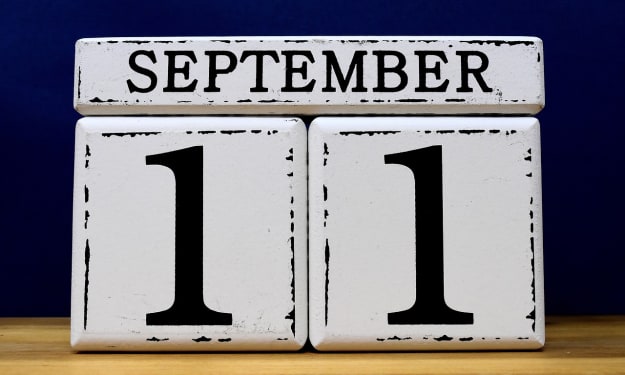The Day Pepsi Became the World's Sixth-Largest Naval Power
Pepsi
I am delighted to recount a riveting tale that illuminates how Pepsi, a soft drink company, once found itself in possession of one of the world's largest military fleets. This anecdote offers a unique lens into the dynamics of our modern society and also illustrates a biological concept that I find enthralling: exhilaration.
The realm of soft drinks is inherently a story of flavors and what people are willing to pay for a gustatory experience. Consider the Romans, for instance, who created a unique taste using glutamate, an excitatory neurotransmitter. They achieved this flavor by fermenting sun-dried fish entrails, giving rise to a thriving trade throughout the Mediterranean basin.
Today, this taste is often replicated with ingredients like Alytus or anchovies. People were willing to pay a premium for this addictive flavor, reminiscent of the famed spice route, which was once more lucrative than trafficking drugs like cocaine.
Energy drinks, such as Red Bull, represent another chapter in this fascinating narrative. Originating in Thailand, these beverages were adopted by Japanese entrepreneurs and foremen working in Thailand. Prior to the advent of energy drinks, substances like amphetamines were commonly used, notably during World War II, to help soldiers stay awake.
An Austrian entrepreneur, after observing Red Bull's efficacy in combating jet lag, saw the beverage's potential in Europe. Through ingenious marketing strategies, he transformed what was once a "drink for the working class" into an indispensable part of student parties.
He employed guerrilla marketing tactics by offering students money to decorate their cars with Red Bull advertisements. This approach significantly increased the brand's visibility and popularity in Europe.
Then there is the classic method of promoting energy drinks in bars and clubs. A Red Bull representative enters an establishment and offers free cans to patrons. After a few visits, the bar owner becomes convinced of the product's efficacy and places a bulk order. This strategy not only increased Red Bull's popularity but also inspired the creation of new cocktails, such as the blend of Suze and Red Bull, called "Suze Boules."
This recalls the story of Kir in France, a cocktail created by Canon Kir to move stocks of a less popular white wine from Burgundy, Aligoté.
Ah, Coca-Cola, another iconic beverage. Its roots trace back to the Mediterranean, where various orange bark-based tonics were in vogue. Vin Mariani, a wine fortified with cola nuts and cocaine, was particularly popular and endorsed by figures like Freud, Queen Victoria, and even the Pope. This wine crossed the Atlantic thanks to an American entrepreneur who had been injured during the Civil War. Seeking a way to break free from his morphine addiction, he introduced Vin Mariani in Georgia, a state where alcohol was prohibited. To circumvent this ban, Coca-Cola was born as a non-alcoholic beverage, but its original recipe was a cocaine-fortified wine.
Despite its humble beginnings, Coca-Cola eventually dominated the market, as did its competitors Dr. Pepper and Pepsi. One of Coca-Cola's unique flavors comes from cinnamon, sourced from Zanzibar or Ceylon. This might explain why cinnamon is often served with coffee in American motels. Ultimately, the history of these beverages is a testament to the power of innovation, entrepreneurship, and marketing.
The secret recipe of Coca-Cola, a blend of vanilla, cinnamon, and orange, is so well-guarded that the ingredients are mixed in two separate centers to prevent any leaks. Even though advanced techniques like high-performance liquid chromatography (HPLC) could potentially decode the recipe, it wouldn't particularly interest a company like Pepsi. They already attempted to replicate the taste in the 1980s but concluded that consumers are loyal to a specific flavor.
To be clear, I am not sponsored by Coca-Cola or Pepsi. This reminds me of the famous comparative advertisement between the two brands, launched for Halloween, where a Coca-Cola can wore a Pepsi cape with the slogan, "Everyone wants to be a hero." A clever jab, indeed.
But how did we arrive at a juncture where Pepsi owned one of the world's largest military fleets? To understand this, one must hark back to the Cold War era. Pepsi was incredibly popular in the Soviet Union, much like the Dior brand. Despite their label as "capitalist poison," these products were widely consumed. There even exists a famous photograph of Che Guevara sipping a Coca-Cola mixed with Bacardi.
The history of Bacardi in Cuba is more complex than it appears. The Bacardi family initially supported Fidel Castro before turning against him following nationalizations, all of which transpired in the 1950s.
During an exposition in the United States, Pepsi's CEO managed, through the intervention of Vice President Richard Nixon, to have Nikita Khrushchev taste his beverage. Khrushchev already had a penchant for a white version of Coca-Cola, created for him during World War II so that it would not resemble an American product.
During that war, Coca-Cola also launched Fanta in Germany to circumvent embargoes. Adolf Hitler was a great fan of this beverage. After the war, Max Schmeling, the famous German boxer who had refused to part ways with his Jewish trainer, became the director of Coca-Cola in Germany. He used his fortune to assist the widow of his opponent, Joe Louis.
During the period of de-Stalinization in the Soviet Union, it was Khrushchev who introduced Pepsi into his country. Often depicted with an ear of corn, symbolizing his attempt to promote corn cultivation in the USSR, Khrushchev also had a fondness for a Georgian lemonade called Tarhun, a green drink made from tarragon.
Khrushchev catalyzed Pepsi's popularity in the USSR, concluding a deal to supply the country with the beverage. However, since the ruble was inconvertible abroad, a barter agreement was established: one liter of Pepsi for one liter of vodka. It is worth noting that Dmitri Mendeleev, the father of the periodic table, had as one of his early assignments the task of defining the alcoholic content of vodka.
It is fascinating to see how scientific research can sometimes be influenced by the alcohol industry. The statistical test known as the Student's t-test was developed by a statistician funded by Guinness, the famous Irish brewery. Moreover, a devoted pastor, working on Jura's yellow wine, discovered the bacterial origin of diseases, a revelation that transformed medicine but was only accepted much later.
In this context, Pepsi's story is equally riveting. The barter agreement with the USSR was extremely profitable for Pepsi, but they soon realized that storing such a large amount of vodka would pose sociological and demographic problems. Consequently, they began to accept other forms of payment, culminating in Pepsi becoming the owner of several submarines, frigates, and destroyers at the end of the Cold War, making the company the world's fifth-largest naval power in terms of tonnage.
After the fall of the Soviet Union, Coca-Cola took over as the dominant beverage. This is a perfect example of exaptation, a biological concept that describes how a species adapts to a new environment. Similar examples can be seen in nature, such as whales, which are biologically ungulates but have adapted to marine life.
This concept of exaptation, or adaptability and innovation, is also visible in the business world. Whether it's Pepsi, Nintendo, which transitioned from card games to video games, or even Lamborghini, which moved from tractors to sports cars, exaptation is ubiquitous. Even in more obscure cases, like the company "Brides L'aise," which transitioned from soap to soda and then to chewing gum, or Vespa, which transformed wartime mopeds into elegant scooters, exaptation is a universal phenomenon.
In sum, exaptation is a captivating concept that applies equally to the natural world and the business realm. It is the mechanism by which organisms or companies adapt and reinvent themselves to navigate an ever-changing environment. Whether it's a bird capable of gliding over great distances or a company that is constantly reinventing itself, exaptation is a phenomenon that transcends boundaries.
About the Creator
Massinissa Amrane
Eclectic and passionate writer, I share captivating fiction narratives and insightful non-fiction analyses. Follow me to explore a range of topics that ignite imagination and provoke thought.
Enjoyed the story? Support the Creator.
Subscribe for free to receive all their stories in your feed.







Comments
Massinissa Amrane is not accepting comments at the moment
Want to show your support? Send them a one-off tip.